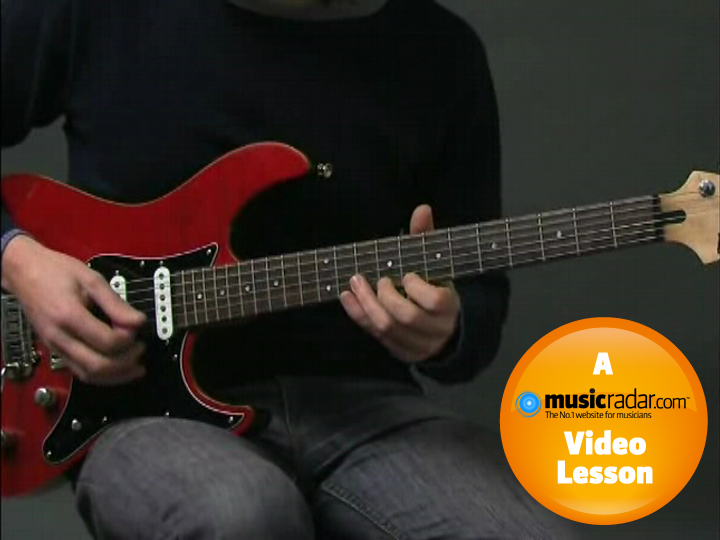Play better blues lead guitar

The 12-bar blues has long been the staple of those making their first shaky forays into the world of lead guitar, but it's not always easy to get to grips with.
For example, when you play A minor pentatonic or A blues scale over an A7 chord (the approach most people start out with), there's the potential for some pretty nasty harmonies. An A7 chord contains a C#, which will sound dissonant with the C natural in the minor pentatonic and blues scales.
So, if you hold a C natural against an A7 chord for too long, it's going to sound bad. You can still use these scales though; just add an occasional C# into each scale and use the C natural notes sparingly, then you can keep the classic blues phrasing without the pitfalls.
Check out the tab below and look out for those C naturals over the A7 chords.
Next page: tab for the video licks
Blues scale lick 1

(Click tab to enlarge)
Cut the length of the C natural note short to minimise the dissonance with the C# note in the A7 chord, while still keeping the classic phrase.
Blues scale lick 2

(Click tab to enlarge)
Want all the hottest music and gear news, reviews, deals, features and more, direct to your inbox? Sign up here.
The D7 (D F# A C) has a C natural note in it, so it'll sound fine if you play a C note over this chord. It's the C# that creates the dissonance this time.
Blues scale lick 3

(Click tab to enlarge)
Make the position change in bar 4 easier by playing the 8th fret G on the second string with your second finger instead of your first.
Total Guitar is Europe's best-selling guitar magazine.
Every month we feature interviews with the biggest names and hottest new acts in guitar land, plus Guest Lessons from the stars.
Finally, our Rocked & Rated section is the place to go for reviews, round-ups and help setting up your guitars and gear.
Subscribe: http://bit.ly/totalguitar
